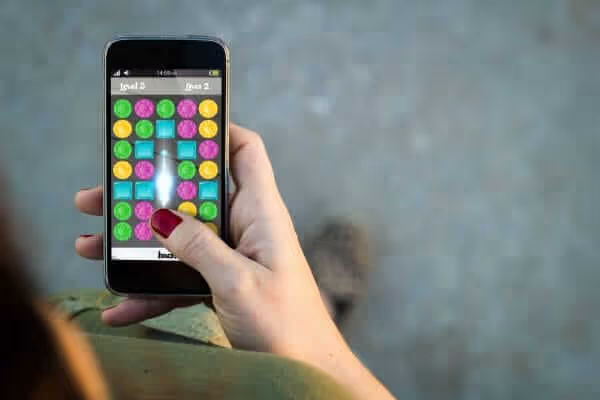How to Use Gamification as a Customer Retention Strategy

As we discussed in our other blog, titled “Gamification in Loyalty Programs: Why is it Important?”, gamification is when you take a standard process and apply gaming components to make the process more engaging and fun.
Through gamification, you can incentivise specific behaviours… which is a handy trick when you’re marketing a loyalty program!

So… what makes a good game?
Here are some essential components to gamification, regardless of what process or system it’s being applied to.
- Points for completing tasks. The accumulation of points is gratifying in itself; like watching your savings account gradually build.
- Levels to provide structure to the game and help players determine where they stand in the overall “plot” of the game.
- Leader boards to allow players to compare their status and see their position alongside competitors. This also helps to create a sense of urgency in achieving a better “score” or result.
- Badges to acknowledge achievements and milestones. Players need to see reward for their efforts, even if the reward is merely to acknowledge their advancing progress through the game.
- Challenges that need to be overcome, or conflicts that need to be resolved in order to prove your abilities and keep the game interesting.

10 Crucial Tricks for Using Gamification to Retain Customers
Here at Stamp Me, we’ve compiled a list of 10 things you can do when gamifying your loyalty program to ensure your customers find it absolutely irresistible, so that you can enjoy heightened brand loyalty and customer retention.
1. Construct Clear Goals or Benchmarks
What are you hoping to achieve with this marketing campaign? What consumer behaviour are you aiming to initiate with this gamification? What is the “end game” that you want customers to be striving for?
These are important questions that need to be answered before you even begin mapping out your gamified loyalty program structure.
2. Know Who Your Customers Are
Establish which key demographic encompasses the majority of your customer base, and make sure your gamified loyalty program is tailored specifically to them. This task is made easier for businesses whose main customers are millennials, rather than a company who mainly sells products and services to Baby Boomers and retirees, for example.
Let’s say the majority of your customers are university students with part-time jobs – you’d probably find a loyalty program with a sophisticated gaming aspect to it with numerous tiers, side promotions and engaging features will be the most effective approach.

3. Weave a (Simple) Storyline Through the Program
The most memorable loyalty programs out there have a “plot line” component to them that helps turn the rewards program into a sort of narrative for its customers.
It doesn’t need to be overly complex – it should, however, contain elements of your brand and its marketing strategies to keep your brand front-of-mind when customers are engaging in the gamified aspects of the loyalty program.
4. Go Mobile
Considering that the mobile gaming industry raked in a staggering USD $40 billion of revenue just in 2017, it only makes sense that your loyalty program is accessible by mobile for convenience and ease of use – anywhere, anytime, from users’ very own pockets.
Stamp Me provides mobile loyalty app solutions to businesses of all shapes and sizes, with gamified features like “Scratch & Win” incorporated into the app for merchants to activate as they see fit.

5. Use Social Media to Complement the Gamified Aspects of your Loyalty Program
Your brand’s social media accounts can be utilised in conjunction with your gamified loyalty program in a wide range of creative and innovative ways. Firstly, social media can act as a remarkably effective marketing tool in general.
M&M’s posted a “spot the odd one out”-style image on its social media accounts to promote the launch of all-new Pretzel M&M’s. The post went viral in no time, got people talking about and created a lot of hype around the new product.

Source: Facebook
Social media can also be used as a global leader board for customers to show off their status within the gamified loyalty program, and compare progress with others. This helps bring out people’s inner competitive streak and creates a sense of urgency. Remember how well this worked for the likes of FarmVille and Candy Crush?
6. Show Progress
Make it simple and straightforward for customers to see their status within the loyalty program, and congratulate them on every milestone they achieve. Constant reminders of where they stand, how far off they are from their next reward and what they need to do to get there (“Tom, you’re only one coffee away from a free muffin of your choice this week!”) motivate and incentivise.
7. Instant Gratification for New Customers
Why not start your newest loyalty program member off with a win? Offering a small reward upfront is an excellent way to get customers engaging with the “game” right away, while the effective gamification strategies help to ensure this token of goodwill pays dividends in the future.

8. Give Your Customers a Challenge to Overcome
People love a good challenge, especially when gaming is involved! Now, in regards to a loyalty program, this doesn’t mean “make customers spend $500 in-store to receive a 10% discount”... that’s not a challenge; it’s just a terribly designed loyalty program!
Starbucks Rewards offers its customers challenges like, “Try each of these items between this date and that date to collect 150 Bonus Stars”. It’s a bit of fun for the customer, it encourages them to try new things on the menu, and it allows Starbucks to push new products that they’ve recently added to the menu.
Considering that Starbucks Rewards trumped Apple Pay, Google Pay and Samsung Pay as the most used mobile payment app US-wide in 2018, it’s hard to argue that this strategy isn’t working!

9. Draw Out People’s Competitive Streak
As mentioned earlier, allowing customers to post their loyalty program status and rewards progress on social media can be a highly effective tool for stirring up some competition (as well as referring new customers to get involved – free advertising, essentially).
However, you can also integrate “leaderboard” sections into your brand’s digital loyalty app, so that customers can track where they stand in regards to their competitors in real-time.
10. Keep Customers on Their Toes with Some Spontaneous Treats
People love surprises – especially unexpected gifts! When designing the structure of your rewards program, throw in a few incremental prizes and fun side-challenges that customers won’t know about in advance.
Inform your loyalty app members of their random free giveaway, limited-time discount or chance to win exclusive prizes with the “Scratch & Win” promotion by SMS or push notification, to keep them invested in the loyalty program and motivated to keep racking up points and redeeming rewards.
This inspires a sense of achievement among your loyal customers, and demonstrates your brand’s gratitude for their ongoing commitment to your brand.
Want to read more about gamification? Check out this post containing examples of brands using gamification in marketing.

It’s often more than you think. Plug in your daily customer numbers to see your potential returns instantly.






.webp)